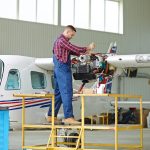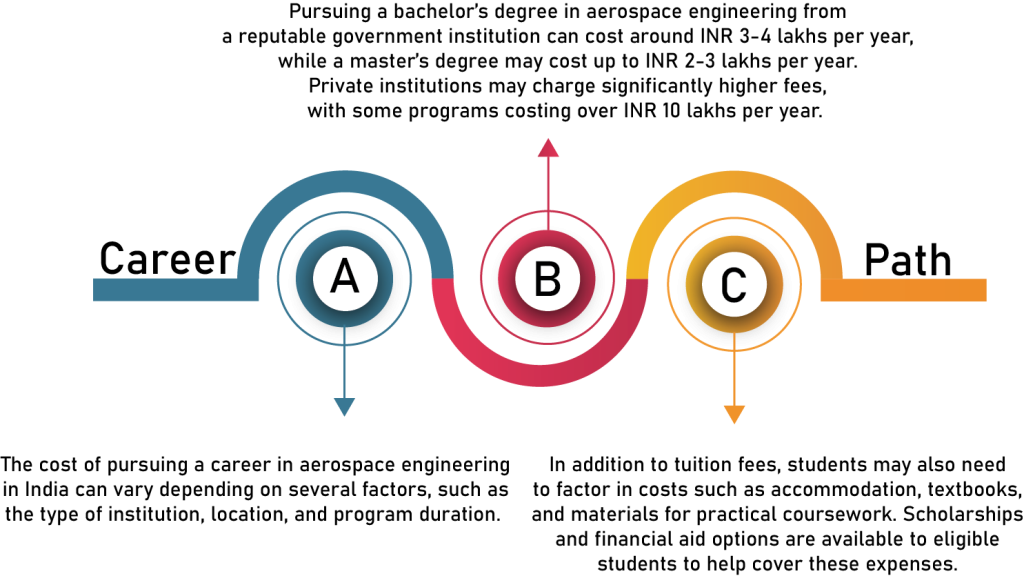Aerospace engineering is a branch of engineering that focuses on the design, development, and construction of aircraft and spacecraft. Aerospace engineers are responsible for creating and improving technology used in commercial and military aircraft, satellites, rockets, and space exploration vehicles. They work to improve efficiency, safety, and performance, while also addressing environmental and economic concerns. The field of aerospace engineering has a significant impact on the advancement of technology and exploration of the universe.
Work description
Aerospace engineers are responsible for designing and developing aircraft, spacecraft, satellites, and missiles. They use their knowledge of aerodynamics, materials science, propulsion systems, and control systems to design and test new prototypes, as well as improve existing designs.
Aerospace engineers may work on a wide variety of projects, ranging from designing commercial airliners to developing cutting-edge space exploration vehicles.
They work in teams with other engineers and technicians to ensure that their designs are safe, efficient, and meet all necessary regulations. They may also oversee the manufacturing and testing of their designs, and may be involved in the operation and maintenance of aircraft and spacecraft.
High Demand
High salaries and job stability.
Lucrative salaries
Opportunity to work on cutting-edge technology and exciting projects.
Opportunities for innovation
Ability to make a significant impact on the field of aerospace engineering and the world at large.
Versatility
Opportunities for travel and international collaboration.
Flexibility
Constant opportunities for learning and professional growth.
High stress
High levels of competition for jobs.
Long hours
Long working hours and tight deadlines.
Competitive field
High stress levels, particularly during testing and launch phases.
Constant learning
The potential for high levels of responsibility and accountability.
Isolation
Limited job opportunities in certain geographic locations.
The cost of pursuing a career in Computer Engineering in India can vary depending on various factors such as the institution, location, and course duration. However, on average, pursuing a bachelor’s degree in computer engineering from a top-tier institution in India can cost anywhere between INR 5 to 15 Lakhs for the entire course duration of Four Years. Pursuing a master’s degree in computer engineering from a reputed institution can cost anywhere between INR 2 to 10 Lakhs for the entire course duration of Two Years. Additional expenses such as accommodation, food, and textbooks may also add to the overall cost of pursuing a career in computer engineering.
[wpcharts type=”horizontalbarchart” bgcolor=”red:gray:yellow,blue:gray:yellow,random:gray:yellow,purple:gray:yellow” min=”0″ legend=”true” titles=”2 year , 5 year” values=”3,7,5,12″]
The earning potential of an aerospace engineer in India can vary depending on several factors, such as level of education, years of experience, industry, and job location.
As per reports, the average salary for an aerospace engineer in India is around INR 8-10 lakhs per annum for entry-level positions. With 5-10 years of experience, aerospace engineers can expect to earn salaries ranging from INR 15-20 lakhs per annum. Senior-level aerospace engineers with extensive experience and expertise can earn significantly higher salaries, with some earning up to INR 50 lakhs or more per annum.
Salaries may also vary depending on the employer, with opportunities available in industries such as aviation, defense, research and development, and space exploration.
[wpcharts type=”horizontalbarchart” bgcolor=”red:gray:yellow,blue:gray:yellow,random:gray:yellow,purple:gray:yellow” min=”0″ legend=”false” titles=”Entry-Level, Mid-Career, Senior-Level ” values=”5,15,25,35,45,55″]
Strong foundation in science and mathematics, particularly physics and calculus
Strong analytical and problem-solving skills
Ability to work well in a team and collaborate with others
Strong attention to detail and ability to focus on complex tasks for extended periods
Strong communication skills to convey complex technical information to others
Weakness in fundamental science and math concepts.
Lack of attention to detail or tendency to rush through tasks.
Poor time management and organization skills.
Inability to work in a team or collaborate with others effectively.
Weakness in communication skills, particularly in explaining complex technical information to others.
Work-life balance
The work-life balance of an aerospace engineer can vary depending on the specific job, industry, and employer. Aerospace engineering is a demanding field that often requires long hours and high levels of focus and dedication, particularly during critical phases of a project, such as testing or launch.
However, many employers in the aerospace industry also recognize the importance of work-life balance and offer flexible scheduling, remote work opportunities, and other perks to help employees maintain a healthy work-life balance. Aerospace engineers may also have opportunities for travel, which can be both exciting and challenging for maintaining work-life balance.
Ultimately, achieving a healthy work-life balance in aerospace engineering requires effective time management, clear communication with colleagues and supervisors, and a commitment to self-care and well-being outside of work.

Advancements in aerospace engineering have led to significant technological progress in areas such as aviation, defense, and space exploration.
Aerospace engineering has played a critical role in improving transportation systems, increasing efficiency, and reducing environmental impact.
The field has created many job opportunities for engineers, scientists, and researchers in various industries.
Aerospace engineering has also contributed to international collaboration and cooperation, bringing together professionals from different countries to work towards common goals.
Aerospace engineering has inspired generations of young people to pursue careers in science, technology, engineering, and mathematics (STEM) fields.
Aerospace engineering has contributed to the development of new materials, technologies, and processes that have applications beyond the aerospace industry.
Aeronautics
This specialization focuses on designing and testing aircraft and related systems, such as engines, avionics, and control systems.
Astronautics
This specialization focuses on designing and testing spacecraft and related systems, such as propulsion, life support, and communication systems.
Propulsion
This specialization focuses on designing and testing engines and propulsion systems for aircraft and spacecraft, including turbojets, turbofans, rockets, and ion thrusters.
Structures and Materials
This specialization focuses on designing and testing the structures and materials used in aircraft and spacecraft, including composites, metals, and alloys, to ensure they can withstand the stress and strain of flight.
Avionics
This specialization focuses on designing and testing the electronic systems used in aircraft and spacecraft, including navigation, communication, and control systems.
Conclusion:
In conclusion, aerospace engineering is a highly challenging and rewarding career choice that offers numerous opportunities for personal and professional growth. Whether designing aircraft and spacecraft, developing propulsion and control systems, or researching new materials and technologies, aerospace engineers play a critical role in shaping the future of aviation, defense, and space exploration. With a growing demand for qualified professionals in the field, pursuing a career in aerospace engineering can be an excellent choice for those with a passion for science, technology, and engineering.




